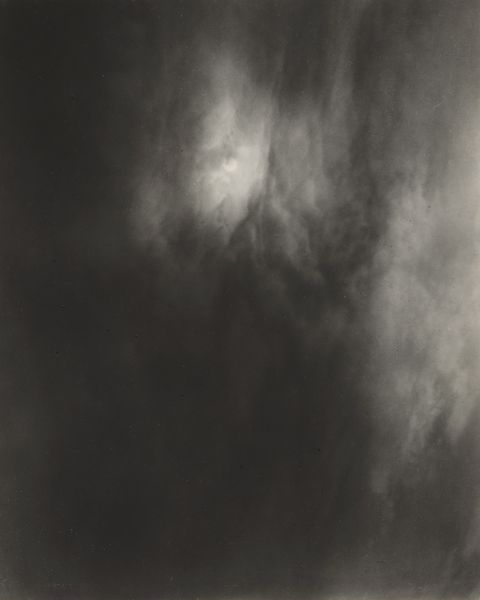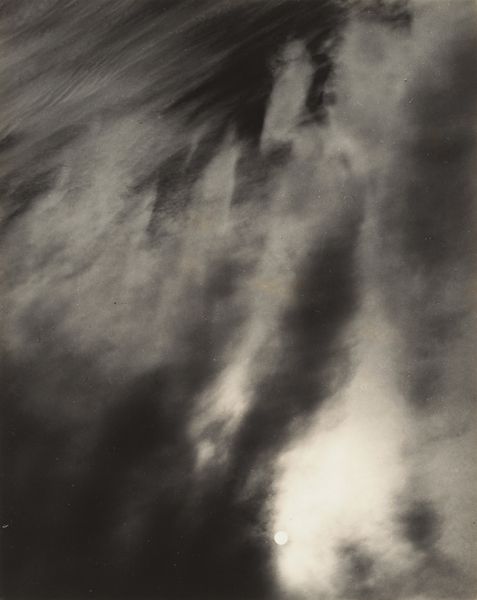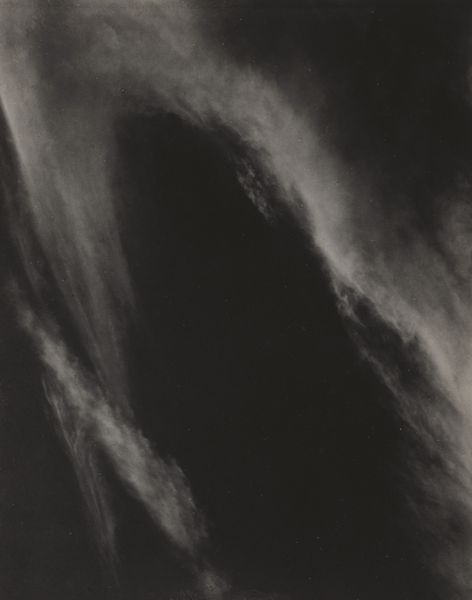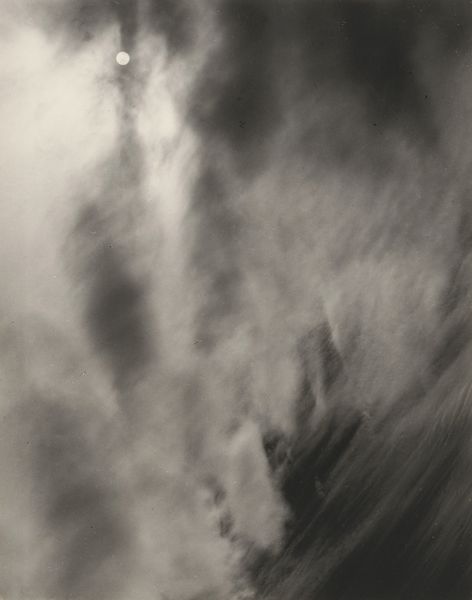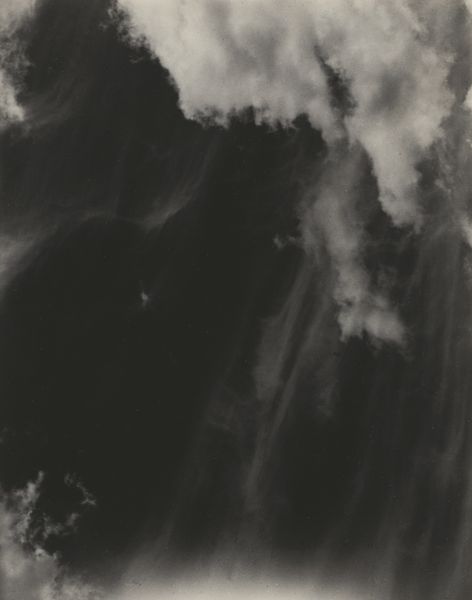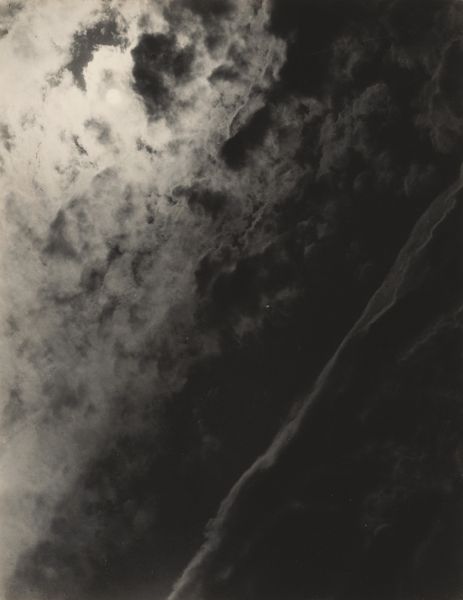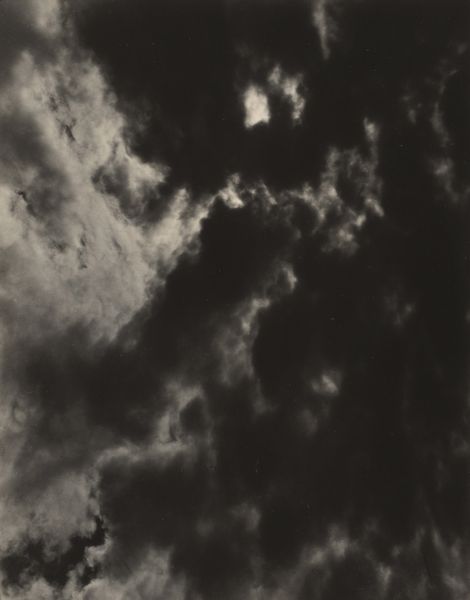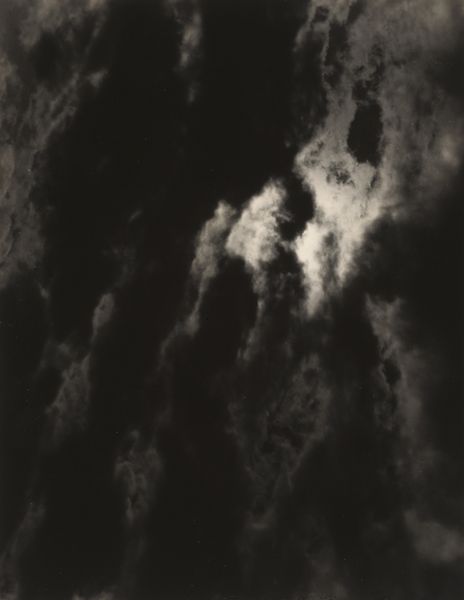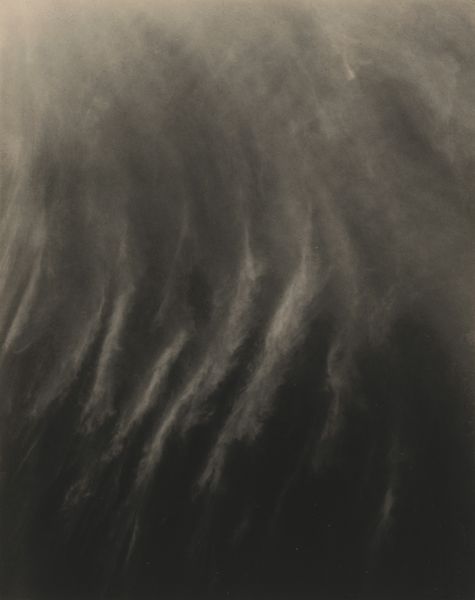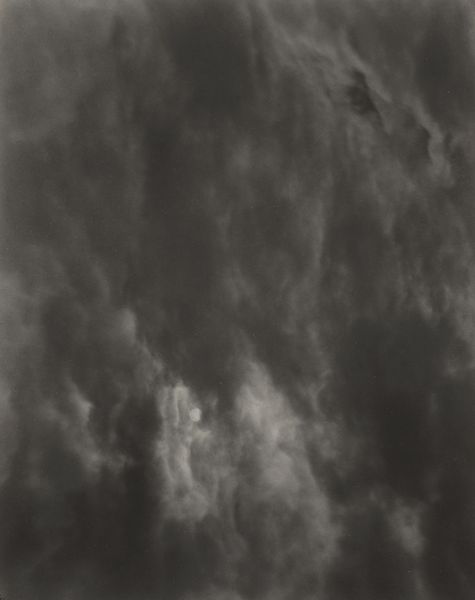
Dimensions: sheet (trimmed to image): 11.7 x 9.4 cm (4 5/8 x 3 11/16 in.) mount: 35.3 x 27 cm (13 7/8 x 10 5/8 in.)
Copyright: National Gallery of Art: CC0 1.0
Curator: Here we have a photograph by Alfred Stieglitz, a pivotal figure in the history of photography. This piece, part of his "Equivalent" series, was created between 1925 and 1927. Editor: Mmm, so, a series of cloudscapes, right? It feels immediately like I'm looking up, almost dizzyingly so, at an endless, churning sky. Sort of dramatic, but with a touch of, like, sublime peace lurking in there somewhere. Curator: Exactly. Stieglitz aimed for these cloud photographs to represent his inner emotional states, suggesting that a photograph could symbolize anything—abstract emotions and ideas, not just concrete objects. He challenged the established conventions that defined photography solely as documentation. Editor: Yeah, I dig that. So, no fancy landmarks, no famous faces... just raw feeling translated into light and shadow. It's incredibly poetic for what is essentially just… clouds. Does it smack of a reaction against all those stuffy portraits from the previous century, or am I way off? Curator: Not at all. In a way, Stieglitz was responding to and attempting to elevate the discourse surrounding photography, to situate it among other established fine art forms. The Photo-Secession movement, which he spearheaded, very deliberately wanted to move beyond straightforward documentary work, imbuing photography with artistic intent. Editor: Well, mission accomplished! I see, like, swaths of dark moodiness battling it out with glimpses of pure luminosity. It's moody but meditative. Did Stieglitz plan the shots or did he improvise a bit? Curator: Reports suggest that he would observe the clouds until he found formations that spoke to him, so there was certainly spontaneity to the compositions. Editor: It makes you wonder what he was wrestling with internally. I imagine this kind of sky above when one is feeling the full force of big human experiences: love, loss, grief, and change. And what is black and white, really, but those core emotional extremes? Curator: Very astute, and it is partly this open endedness that keeps drawing viewers back. Editor: It’s fascinating how he distilled such a wide range of complex emotions into a seemingly simple scene. You look at this and, in effect, feel you look *into* it. Curator: Indeed. Stieglitz urged people to connect with his photographs emotionally, fostering an interpretive engagement that endures nearly a century later. Editor: He totally made clouds the Rorschach test of his time! So beautifully evocative and enduring!
Comments
No comments
Be the first to comment and join the conversation on the ultimate creative platform.
